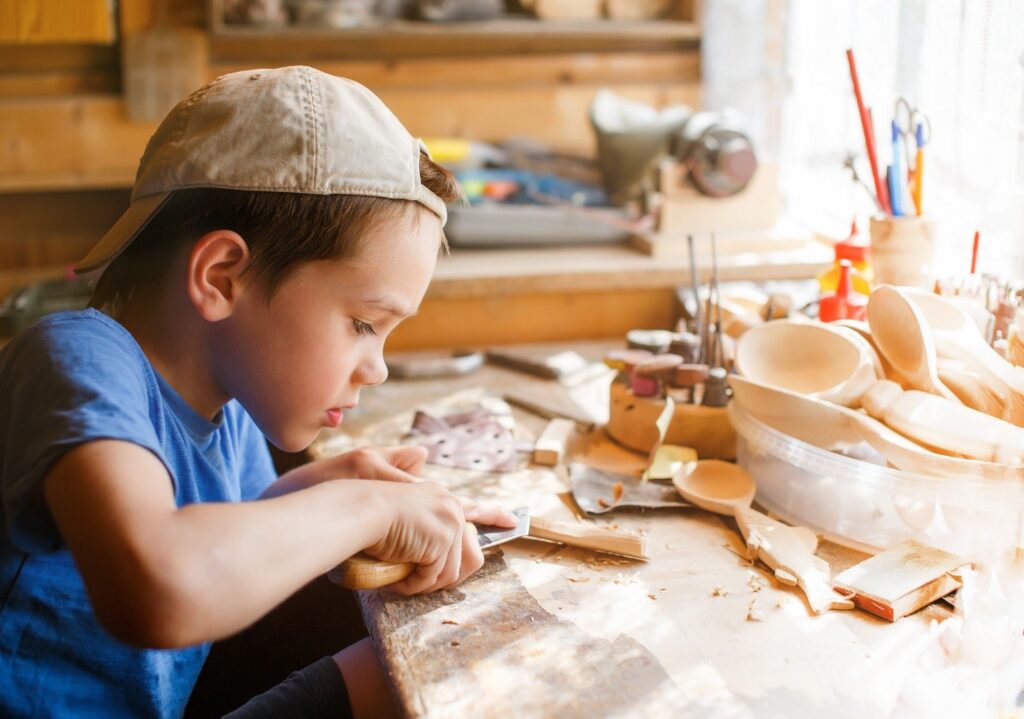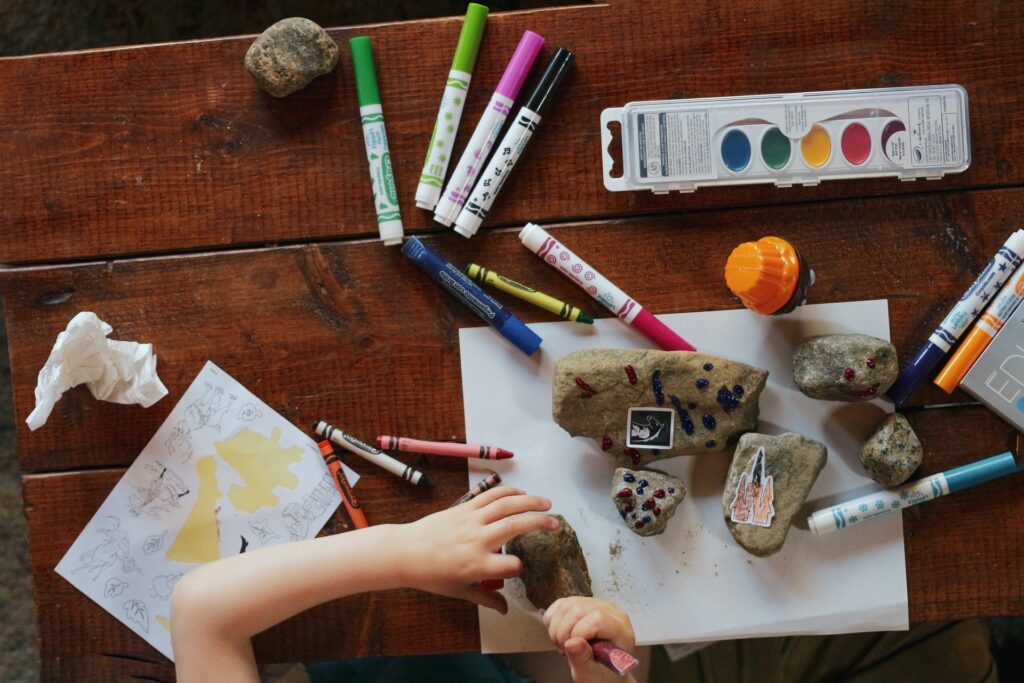Creativity is not just about being good at drawing or playing an instrument – it’s a way of thinking, a way of viewing the world. Fostering creativity in children helps them become problem solvers, innovators, and flexible thinkers. Here are ten easy ways to nurture creativity in your child.
Table of Contents
Provide the Resources

Creativity thrives when there’s an abundance of resources to stimulate the imagination. Providing your child with a variety of materials can open up endless possibilities for creative expression. Art supplies like paints, crayons, and clay allow them to express their ideas visually. Building blocks or LEGO can help them understand spatial relationships and design principles. Musical instruments can introduce them to the world of sounds and rhythms. Even everyday household items, like cardboard boxes or old clothes, can spark their imagination. The key is to provide resources that are open-ended and can be used in multiple ways.
Encourage Curiosity

Curiosity is the driving force behind creativity. It’s what pushes us to ask questions, explore the unknown, and seek out new experiences. Encourage your child’s natural curiosity by fostering a learning environment where questions are welcomed, and exploration is encouraged. Take nature walks and discuss the different plants and animals you see. Experiment with simple science projects at home. Visit museums or historical sites and talk about what you’ve learned. By nurturing their curiosity, you’re helping them develop a lifelong love for learning and discovery.
Allow for Unstructured Play

Structured activities and games have their place in a child’s development, but unstructured play is where the magic of creativity truly happens. During unstructured play, children are free to use their imagination and come up with their own games and scenarios. They learn to think independently, solve problems, and entertain themselves. Whether it’s building a fort out of cushions, creating a fantasy world with their toys, or simply daydreaming, unstructured play is a crucial part of developing creativity.
Foster a Creative Environment

A creative environment is one where children feel free to experiment, make a mess, and express their ideas without fear of judgment. This could be a dedicated space in your home, like a craft corner filled with art supplies, a music area with different instruments, or an outdoor space for exploration and nature activities. The space should be safe, accessible, and stocked with a variety of materials for them to use. Most importantly, it should be a place where their creative efforts are celebrated, not critiqued.
Encourage Risk-Taking

Creativity often involves taking risks and stepping out of our comfort zones. Let your child know that it’s okay to make mistakes and fail. This can be as simple as saying, “It’s okay if your painting didn’t turn out the way you wanted, what’s important is that you tried and had fun.” By fostering a safe space for risk-taking, you’re helping them develop resilience and the confidence to think outside the box. Remember, every great invention, every masterpiece, started as an idea that someone was brave enough to pursue.
Expose Them to the Arts

Artistic experiences can be incredibly inspiring for a child’s imagination. Taking your child to museums allows them to see the world through the eyes of different artists. Concerts introduce them to the power of music and the emotions it can evoke. Plays and theater performances can transport them to different worlds and times, stimulating their narrative imagination. These experiences not only enrich their understanding of the world but also provide a wealth of inspiration for their own creative expressions.
Limit Screen Time

While technology offers many tools for creative expression, excessive screen time can hinder a child’s creativity. Staring at a screen often involves passive consumption rather than active creation. It’s important to balance screen time with activities encouraging active engagement and creative thinking. This could be playing outdoors, engaging in hands-on crafts, or simply daydreaming — an underrated but powerful way to boost creativity.
Read Together

Reading is a fantastic way to stimulate a child’s imagination. When you read a story, your child visualizes the characters, settings, and events in their mind, which is a creative process in itself. Choose a variety of books — fantasy, mystery, historical, science fiction — to expose them to different genres and styles of writing. Ask open-ended questions encouraging them to think creatively, such as, “What do you think will happen next?” or “How would you end the story?”
Celebrate Their Ideas

Every idea, no matter how small or outlandish, is a testament to your child’s creativity. Show enthusiasm when your child shares their ideas. Ask them to elaborate, offer positive feedback, and encourage them to put their ideas into action. This not only boosts their confidence but also reinforces the value of creative thinking.
Be a Role Model

Children learn by observing the adults in their lives. Show your child that creativity isn’t just for kids — it’s a lifelong skill. Let them see you engaging in creative activities, whether it’s painting a picture, playing an instrument, cooking a new recipe, or coming up with an innovative solution to a problem. Discuss your creative process with them, your challenges, and how you overcame them. By modeling creative behavior, you’re showing your child that creativity is not only valued but is also an integral part of everyday life.








